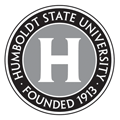Home > Journals > HJSR > No. 41 (2019)
Humboldt Journal of Social Relations
Abstract
This paper will discuss the processes and methods of relief visualization of LiDAR-derived digital elevation models (DEM’s) and classification of secondary data to identify archaeological remains on the ancient Maya landscape in northwestern Belize. The basis of the research explores various Geographic Information System (GIS) and cartographic techniques to visualize topographical relief. Graphic terrain maps assist archaeologists with predictive settlement patterns. The Relief Visualization Toolbox (RVT 1.3) aids to visualize raster DEM datasets in the predictive identification and interpretation of small-scale archaeological features. This dataset and methodology can be utilized to answer questions of population estimates, mobility costs, and effectiveness of ancient technological agricultural systems.
Recommended Citation
McFarland, Jeremy,
and
Marisol Cortes-Rincon.
2019.
"Mapping Maya Hinterlands: LiDAR Derived Visualization to Identify Small Scale Features in Northwestern Belize."
Humboldt Journal of Social Relations
1
(41):
46-58.
DOI: https://doi.org/10.55671/0160-4341.1096


